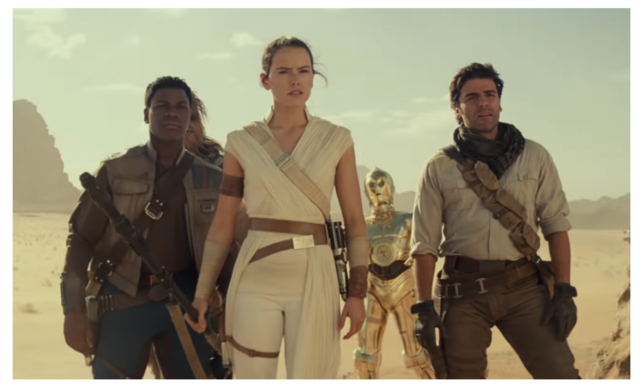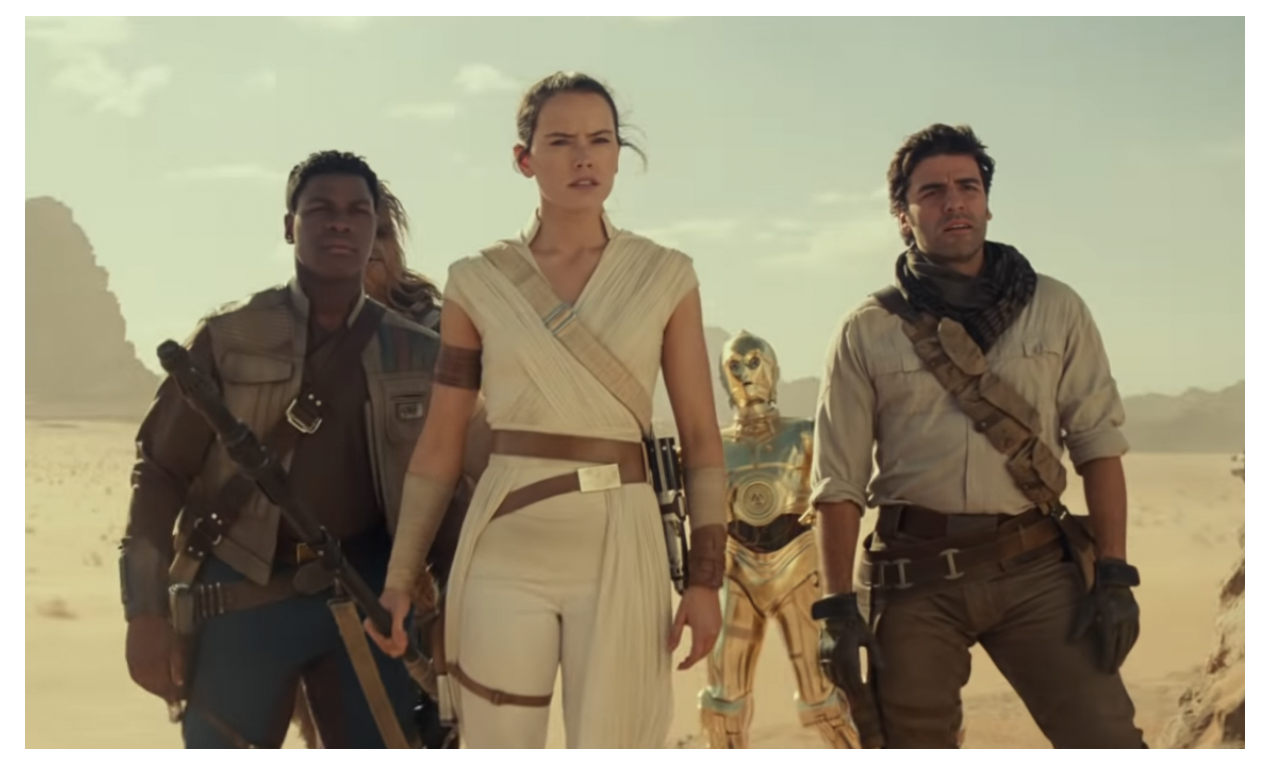By Stefanie Zechner, PhD – Founder and Director, Science. People. Business.
January 2024 is almost over, and we may realize that some of the ambitious goals we set earlier this month don’t make us jump out of bed every morning. And despite a keen determination about our new year’s resolutions four weeks ago, reality may have hit us already and we need to admit that we have not shaken off our old habits – at which point we may be close to throwing in the towel altogether.
Effective goal pursuit is essential for any business to thrive, for every individual manoeuvring a major professional or personal change. Before we give up on the ambitious goals, let’s harness the power of neuroscience and the force of the Jedi for increased motivation and success.
SMART goals alone don’t predict success
We know it: changing behaviour is hard. Setting a smart strategy and clear roadmap together with SMART objectives can bring us far, but will they reliably predict success – whether we CAN do the desired behaviour or whether we WILL do it?
Dopamine is the common currency by which we pursue goals
Let’s take a look on the role of the brain in goal setting and motivation. Our brains follow a rather simply principle: to seek rewards and avoid threats. Reward responses are those that we consciously or subconsciously want more of – such as increased status, feeling in control, enjoying a good meal with friends. The reward responses are mostly driven by the brain’s dopaminergic system. The release of the neurotransmitter dopamine makes us feel good and helps our neurons create new connections. Dopamine creates a feeling of anticipation that says: “This is going to be great!” This motivates us to invest the necessary effort to achieve a reward or invest in pursuing a goal. The dopaminergic pathway mostly involved in reward is the mesolimbic system, which is formed by projections of midbrain dopamine neurons of the ventral tegmental area to the striatum, prefrontal cortex, amygdala, hippocampus, and other structures of the limbic system. Of note, amygdala, prefrontal cortex, and hippocampus are essential in learning and memory formation.
Conversely, the motivation to avoid a threat activates a set of neural systems, the major neurotransmitter associated with aversion is serotonin. The threat response in the brain comes on faster, is stronger, and lasts longer than the reward responses. One might conclude from this that avoidance-motivated goals are more motivating than reward-motivated goals. There are situations in which avoidance motivations may be extremely powerful (“e.g., I want to limit unhealthy fat intake to avoid another myocardial infarction”), we can nevertheless assume that reward-motivated goals are effective for most people.
In their article “Do you plan to win or to not lose?” Heidi Grant Halvorson and E. Tory Higgins point to studies that suggest people have a either a dominance for a promotion-focused approach or a prevention-focused approach and that this dominance has significant impact on goal achievement. Of importance, neither approach is better or worse than the other: both are legitimate perspectives of the same goal. For instance, you may think business growth should be attained by creating new opportunities with new clients while your colleague thinks the emphasis should be on protecting the relationships with existing clients – you are both right.
Our brain craves more than SMART goals – set visionary goals
Our brain loves a good story, especially one filled with purpose and emotion, that touches us personally. Neuroscience revealed that when we immerse ourselves in envisioning the future, our brain activates the reward system. A great way of creating reward responses during goal setting is creating visionary goals. Our visual perception of our future increases our motivation to take on things that are distant – which is true for most of our personal and business goals.
Our brain does not distinguish whether our story is true or not, whether we tell it to somebody else or to ourselves. The more specific and clear it is, the more credible it appears to the receiver. Neuroscience research indicates that goals that are tangible, that relate to concrete objects and are closely linked to actions – as opposed to being abstract – are more easily learned, recalled, and acted upon.
Visionary goals are particularly effective when they ignite our passions and tap into our purpose and are well aligned with our values. When we create a strong mental image of a desired state, a concrete mental picture that activates several of our senses, we not only elicit a strong reward response, we also create a memorable event to our brain. MRI research has shown that affiliation activates the brain’s reward network, thus combining our vision with a mental picture of our peers or our tribe, will multiply the effect and help to form a memorable vision.
According to Andrew Huberman the visual system is principally important in defining what we do in the immediate term. Visualization of a big goal is effective in getting the goal pursuit process started, it is however counterproductive in maintaining pursuit of that goal.
Tips on creating a powerful visionary goal
Position yourself in the near future – 3 or 6 months from now – what would make a real difference for you x months from now? Ask yourself:
- If you could have anything in this area in x months, what would it be?
- What would happen if you achieved that?
- What do you see, feel and hear in this vision?
- What is it you are doing in your vision?
- Are you alone or with other people in your vision? What do the other people do? Are you in an office building or outside? Describe your surroundings.
- If your vision had a title song – what would it be?
- If your vision were to become a blockbuster movie and you had to select a title – what would it be?
When we have created a clear vision of our goal, we want to make sure it is truly inspiring (“on a scale of 1-10 – how inspiring is it for you?” “what needs to happen to make it even more inspiring?”), it is challenging and achievable, it is measurable and clearly stated in one clear, precise sentence of seven words or less.
Once we have defined our visionary goal, we will set 5-7 specific strategies and concrete actions that take us to our goal.
From vision to concrete actions – start with the why, not the how!
When I work with clients in a career coaching program, we usually start diving into my client’s key drivers, values and greatest strengths and get clarity on what energizes them and makes them successful. In the following session we develop a clear vision of their career goal – where they would like to be short, mid- and long-term – and only then start defining specific strategies and tangible actions that take them to their goal. We start with the vision and with the why, not the how – for it’s the why that motivates us, not the how. Let’s look into a real example of a former client whose visionary goal has fuelled their successful career transition.
Using Star Wars in vision setting
My client’s immediate career goal was to elevate her thought leadership and to secure a position that would allow her to shape a patient centric future in the pharmaceutical industry. As we were developing her vision related to this goal, my client said:
- I see myself as a warrior, powerful and strong, fighting for something big
- I get people moving
- I realize I don’t have to be good at everything; I involve others so that I can concentrate on my strengths, I enjoy the diversity of people
- I use heart and mind and be aware of what’s going on around me
- I’m in the here and now, grounded, drawing strength from the earth
- My openness and honesty mean “I allow myself to be hurt”
- Concluding insight from this: I would like to have a small network, a tribe

The vision that my client chose that incorporated these thoughts was this picture out of the Star Wars film “The Rise of Skywalker”. We see Rey holding her weapon in her right hand in a relaxed yet determined manner, her gaze focused forward, concentrated. She stands with both feet firmly on the ground. Behind her are her companions, whom she met on her path and fought alongside her. They are all looking ahead, determined, ready. This picture perfectly visualized her visionary goal which she titled
“with my companions having my back, I lead the way as thought leader!”
In the next step, we developed 5-7 strategies that would bring her to this goal. Here are the ones she chose:
- Clarity on what I want to be visible for – what topic do I want to stand for as a thought leader?
- Clarity on how I take a stand
- Clarity on my pitch
- Clarity on which training programs, if any, will take me further
- Clarity on how I use my network
- Clarity on whether an industry position may be a good next step
- Clarity on how I use partnerships and create win-wins
My client wanted to start with the strategy “clarity on my pitch”. As a specific action for this strategy she was committed to work on in the next days, she chose “write down my 3 biggest successes of the last few years”.
In the following weeks, my client set additional actions for her strategies that brought her to her goal step by step. The vision of who she wanted to become, how she wanted to lead, with whom she wants to fight the important battles and why it mattered, brought the desired results quickly: she successfully structured her personal brand, grew visibility, got clarity about her next steps and last but not least, started in her dream job just a few months later. The force was with her!
Selected Resources
Elliot T. Berkman & David Rock: AIM: An Integrative Model of Goal Pursuit; NeuroLeadership Journal Vol 5, September 2014
Dean Mobbs & Walter McFarland: The neuroscience of motivation; NeuroLeadership Journal Vol 5, September 2014



